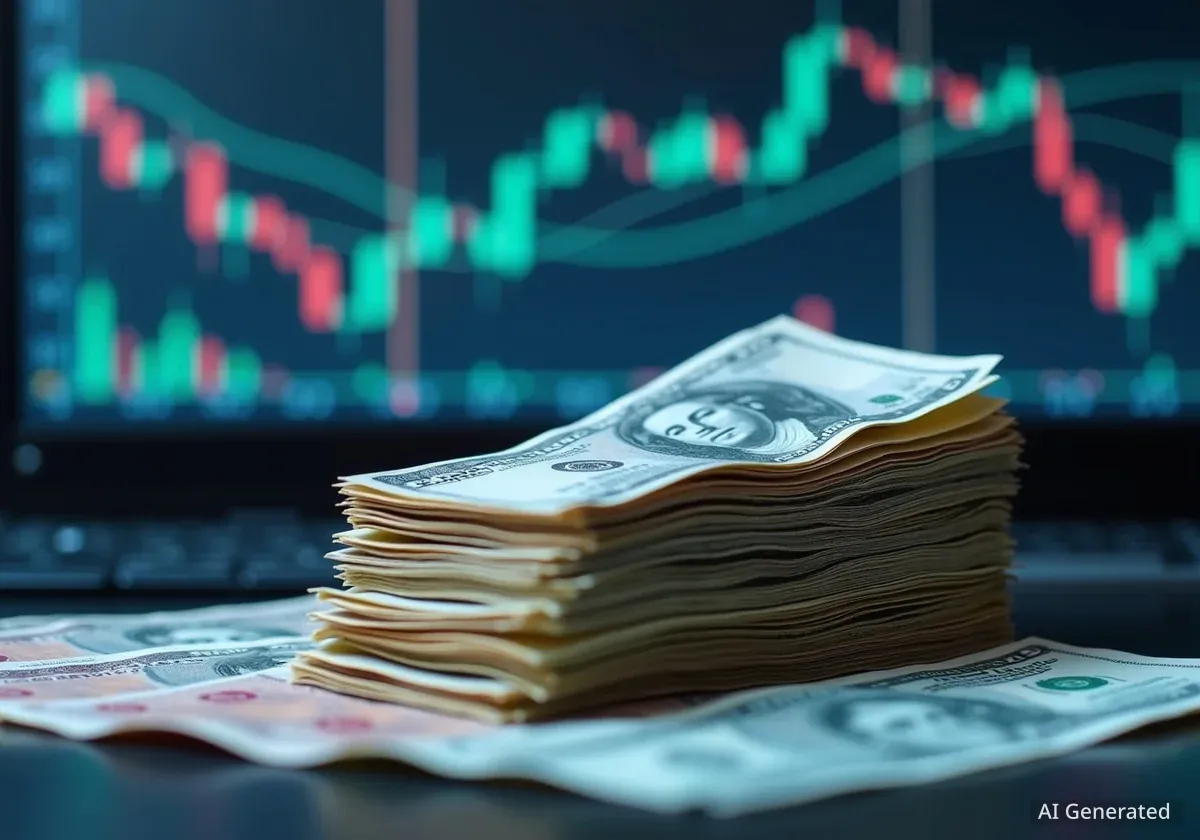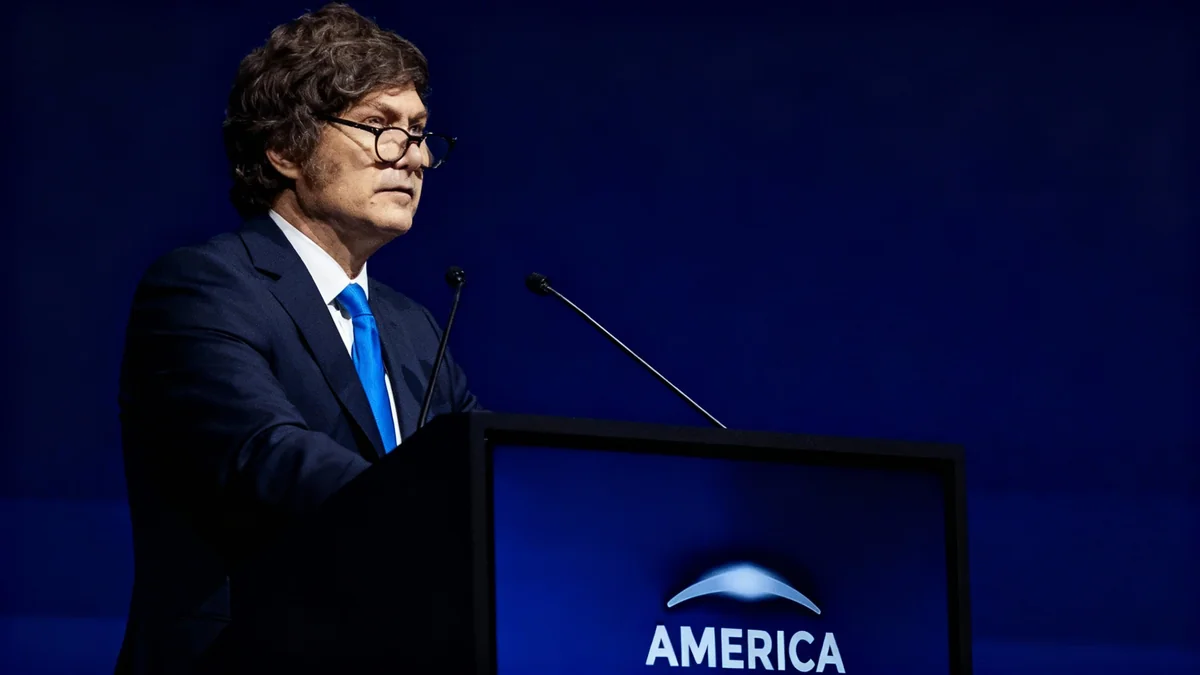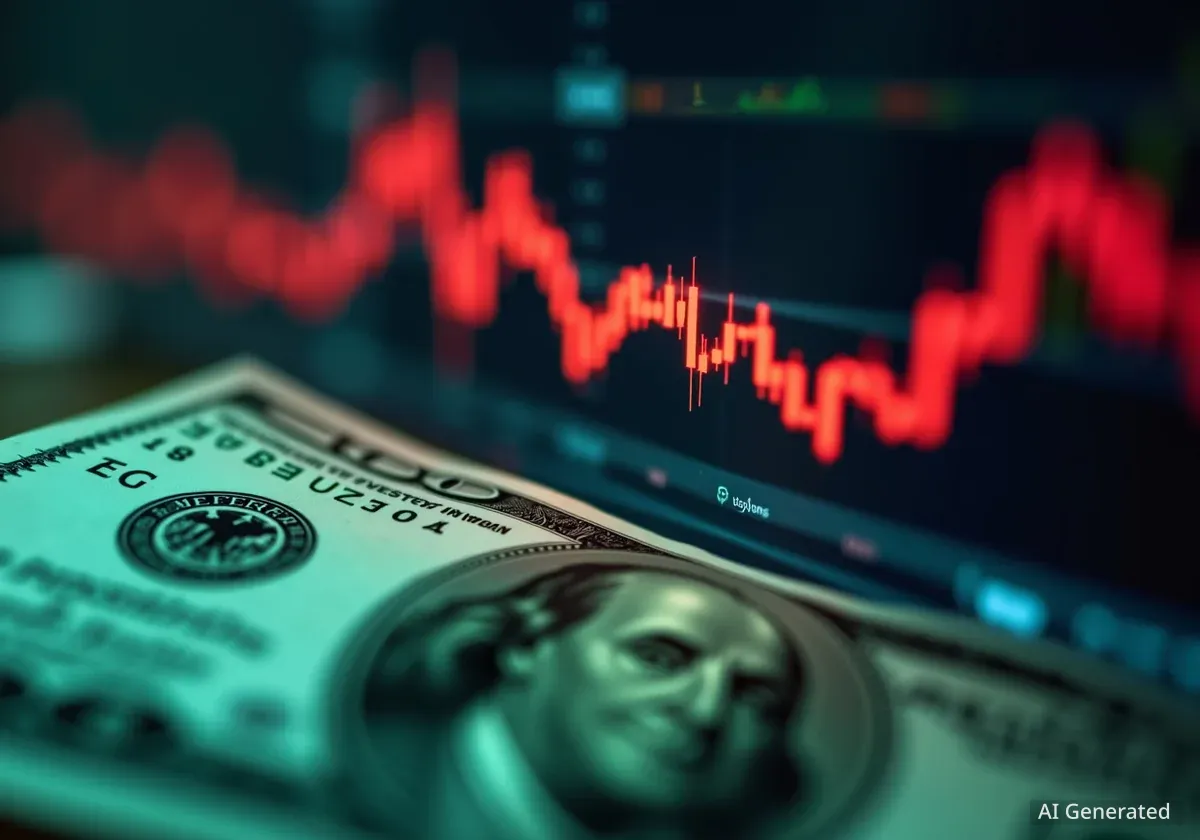The British Pound Sterling (GBP) gained against the U.S. Dollar (USD) on Monday, recovering from a two-week low as the dollar weakened following last week's interest rate cut by the Federal Reserve. The GBP/USD currency pair traded at 1.3496, an increase of 0.27%, bouncing back from a recent low of 1.3453.
Despite the recovery, the Pound's upward momentum is constrained by domestic economic concerns in the United Kingdom, including signs of a fragile labor market and the possibility of tighter government fiscal policy. These factors create uncertainty for the currency's outlook, even as the dollar faces its own pressures.
Key Takeaways
- The GBP/USD pair recovered from a two-week low, rising to 1.3496 due to broad-based U.S. Dollar weakness.
- The Dollar's decline follows the Federal Reserve's recent interest rate cut and signals of further easing by the end of the year.
- Gains for the Pound are being limited by concerns over the UK's labor market and potential fiscal tightening in the upcoming Autumn budget.
- Traders are closely watching upcoming speeches from Bank of England and Federal Reserve officials for new policy signals.
- Key technical levels for GBP/USD are 1.3520 for resistance and 1.3400 for support.
U.S. Dollar Weakness Provides Support for Sterling
The primary driver for the Pound's rebound on Monday was a notable softening of the U.S. Dollar. The U.S. Dollar Index (DXY), which measures the greenback's strength against a basket of six major currencies, fell by 0.18% to 97.47. This decline provided a lift to most G10 currencies, including the Pound Sterling.
This weakness is a direct consequence of the Federal Reserve's monetary policy decision last week. The U.S. central bank reduced its key interest rate and indicated that a total of 75 basis points in cuts could be expected by the year's end, including the most recent reduction. This prospect of lower interest rates makes the dollar less attractive to investors seeking higher yields.
Understanding Interest Rates and Currency Value
Central bank interest rates are a primary driver of a currency's value. When a country's central bank raises interest rates, it can attract foreign investment, increasing demand for its currency and causing its value to rise. Conversely, when interest rates are cut, the currency becomes less attractive, often leading to a decrease in its value relative to other currencies.
However, Fed Chair Jerome Powell's comments following the decision added a layer of complexity. He described the rate cut as a move based on risk management rather than the start of a predetermined easing cycle. According to Powell, there was not widespread support among policymakers for a more aggressive 50-basis-point cut at the time, a statement viewed as mildly hawkish by some market participants.
UK Economic Concerns Limit the Pound's Upside
While the Pound benefited from the dollar's slide, its gains were capped by persistent worries about the health of the UK economy. Analysts point to two significant headwinds that could prevent a more substantial rally for the GBP/USD pair.
First, there are growing concerns about the fragility of the UK labor market. A weakening employment landscape could dampen consumer spending and overall economic growth, putting pressure on the Bank of England to maintain a cautious stance on its own monetary policy.
Upcoming Data: Traders will be closely watching the S&P Global Flash PMI data for the UK, scheduled for release on Tuesday. This report provides an early look at the health of the manufacturing and services sectors, which are crucial components of the UK economy.
Second, the prospect of further fiscal consolidation looms ahead of the government's Autumn budget. Fiscal consolidation refers to government policies aimed at reducing deficits and debt accumulation, which typically involves spending cuts or tax increases. Such measures, while aimed at improving public finances, can also slow down economic activity in the short term, thereby weighing on the currency.
Central Bank Commentary and Political Risks in Focus
Looking ahead, market participants will be paying close attention to commentary from central bank officials on both sides of the Atlantic. In the UK, upcoming speeches from Bank of England Governor Andrew Bailey and Chief Economist Huw Pill will be scrutinized for any hints about the future direction of UK monetary policy.
In the United States, several Federal Reserve officials are scheduled to speak, including Governor Stephen Miran, Richmond Fed President Thomas Barkin, and Cleveland Fed President Beth Hammack. Their remarks will be analyzed for consensus on the path of interest rates, especially following Powell's recent press conference.
"Last week's cut was more of a risk-management action than setting the path of interest rates." - Fed Chair Jerome Powell on the recent rate decision.
Adding to the uncertainty in the U.S. is a political deadline in Washington. Lawmakers in the U.S. Congress face a September 30 deadline to pass a funding bill to avoid a government shutdown. According to reports from NBC, scheduling differences between the House and Senate could complicate negotiations, introducing another element of risk for the U.S. Dollar.
GBP/USD Technical Price Analysis
From a technical standpoint, the GBP/USD pair is at a critical juncture. Despite Monday's gains, the currency faces immediate resistance at the 20-day Simple Moving Average (SMA), currently located at 1.3520. A failure to decisively close above the 1.3500 level could signal that the recent downtrend remains intact.
Potential Scenarios for the Pair:
- Bearish Outlook: If sellers regain control and push the price back below 1.3500, the next significant support level to watch is 1.3400. A break below that could open the door for a move towards the September 3 swing low of 1.3332.
- Bullish Outlook: Conversely, if buyers can sustain momentum and achieve a daily close above 1.3500, the next target would be last Friday's high of 1.3559. Surpassing this level would form a bullish engulfing chart pattern, which could signal further upside potential for the Pound.
The currency's performance this month has been mixed. A review of major currency pairs shows the British Pound was strongest against the Canadian Dollar, but its performance against other major currencies has been more varied, reflecting the competing influences of international and domestic factors.





